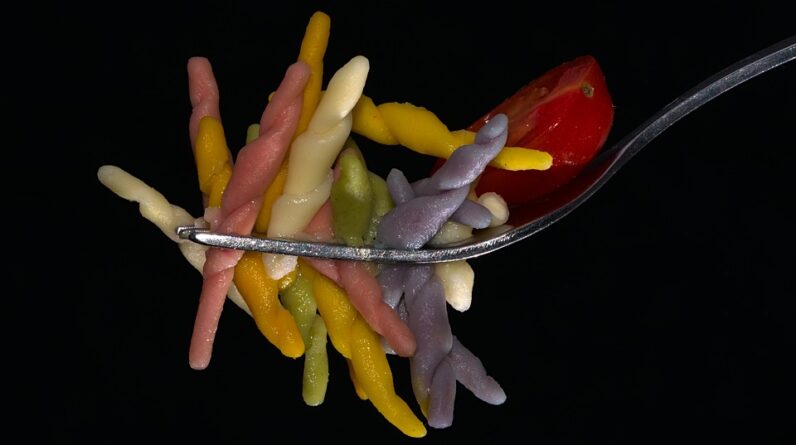In the world of Italian desserts, honey and nuts play a delightful and indispensable role. These two ingredients add a rich depth of flavor, a satisfying crunch, and a touch of sweetness that elevates beloved treats like panettone and torrone to a whole new level. As we explore the wonders of these delectable delicacies, we will uncover the unique ways in which honey and nuts bring an irresistible charm to these traditional Italian sweets. Get ready to indulge your taste buds and discover the irresistible allure of honey and nuts in the realm of Italian desserts.
The Importance of Honey in Italian Desserts
The historical use of honey in Italian cuisine
Honey has been a staple ingredient in Italian cuisine for centuries, and its importance in Italian desserts cannot be understated. Dating back to ancient civilizations, honey was cherished for its sweet and fragrant flavors, as well as its natural preservation properties. In Italy, honey has been used in a variety of dishes, from savory to sweet, and has found its way into countless traditional recipes. Its rich history and cultural significance make honey an integral part of the Italian dessert repertoire.
The role of honey in panettone
Panettone, a classic Italian Christmas sweet bread, owes much of its unique flavor and texture to the addition of honey. Honey serves as both a natural sweetener and a crucial element in the fermentation process. As the panettone dough rises, the natural sugars in the honey are converted by yeast, resulting in a light and fluffy texture. The delicate sweetness of honey enhances the overall taste, providing a subtle depth of flavor that perfectly complements the other ingredients, such as candied fruits and nuts.
The role of honey in torrone
Torrone, an Italian nougat dessert, is another iconic treat that relies heavily on the use of honey. Honey acts as the primary binding agent in torrone, holding together the mixture of nuts, sugar, and egg whites. This sticky concoction is then cooked until it reaches the desired consistency, resulting in a chewy and flavorful nougat. The honey infuses the torrone with its distinct sweetness, balancing out the richness of the nuts and adding a depth of flavor that is both indulgent and satisfying.
Different types of honey used in Italian desserts
In Italian desserts, various types of honey are employed to create unique flavors and nuances. Chestnut honey, with its dark amber color and robust flavor profile, is often used to add a rich and earthy note to desserts. Acacia honey, on the other hand, lends a light and delicate sweetness, ideal for enhancing the flavors of more delicate desserts like panettone and torrone. Orange blossom honey infuses desserts with a citrusy and floral aroma, while wildflower honey brings a complex and slightly herbal taste. Each type of honey adds its own character to Italian desserts, contributing to the overall sensory experience.
The Significance of Nuts in Italian Desserts
A tradition of using nuts in Italian confections
Nuts have long been treasured ingredients in Italian desserts, offering both texture and flavor. Dating back to ancient Roman times, nuts were prized for their richness and nutritional value. Over the centuries, Italian pastry makers have perfected the art of incorporating nuts into their creations, resulting in a wide variety of nut-laden confections. The use of nuts in Italian desserts represents a culinary tradition that has been passed down through generations, showcasing the enduring appeal and significance of these ingredients.
The varieties of nuts commonly used in panettone
Panettone features a delightful medley of nuts that contribute to its distinctive taste and texture. Traditional recipes often call for the addition of almonds, hazelnuts, and candied citrus peels. Almonds provide a delicate crunch and a slightly sweet flavor, while hazelnuts offer a rich and nutty taste that pairs perfectly with the sweetness of the bread. The candied citrus peels, usually made from orange or lemon zest, bring a burst of tanginess to balance out the sweetness of the dough. The combination of these nuts creates a harmonious blend of flavors, elevating panettone to a truly indulgent experience.
The role of nuts in torrone
Nuts play a prominent role in torrone, adding both texture and flavor to this beloved Italian nougat dessert. Traditional recipes often call for almonds or hazelnuts, although variations include pistachios or a combination of nuts. The nuts provide a satisfying crunch that contrasts with the chewy nougat, creating a delightful mouthfeel. Furthermore, the natural oils and distinctive flavors of the nuts infuse the torrone, enhancing its overall taste and complexity. These ingredients are carefully selected and toasted to perfection, ensuring that every bite of torrone is a celebration of nutty goodness.
Toasted nuts and their impact on flavor
Toasting nuts before incorporating them into desserts is a fundamental technique that intensifies their flavors and enhances their overall taste and aroma. By subjecting the nuts to gentle heat, their natural oils are released, resulting in a more pronounced nuttiness. The toasting process also adds a subtle toasted or caramelized note, elevating the complexity of the dessert. Whether it’s the toasty aroma of almonds in panettone or the rich hazelnut flavor in torrone, the act of toasting nuts is an essential step in maximizing their potential and ensuring a truly flavorful Italian dessert.
Panettone: Exploring the Honey and Nut Combination
An overview of panettone
Panettone, a beloved Italian Christmas tradition, is a sweet bread that has become synonymous with the holiday season. This tall and cylindrical cake-like bread is studded with candied fruits, citrus zests, and a variety of nuts, creating a symphony of flavors and textures. Panettone’s airy and moist interior, due in part to the fermentation process fueled by honey, makes it a delightful treat that is enjoyed by families and friends around the world.
How honey enhances the overall flavor of panettone
Honey plays a vital role in panettone, imparting its natural sweetness and depth of flavor. As the dough ferments, the yeast feeds on the sugars present in the honey, resulting in the creation of carbon dioxide gas. This process gives panettone its characteristic light and fluffy texture, ensuring a tender crumb and a melt-in-your-mouth experience. Additionally, the gentle sweetness of honey complements the other ingredients, providing a harmonious balance and a nuanced flavor profile.
The different types of nuts incorporated in panettone
Panettone is known for its generous inclusion of nuts, which add a delightful crunch and a burst of flavor to every bite. Almonds, hazelnuts, and candied citrus peels are commonly used in traditional panettone recipes. Almonds contribute a nutty sweetness and a pleasing texture, while hazelnuts provide richness and depth. The candied citrus peels not only lend vibrant colors but also add a refreshing tanginess that complements the sweetness of the bread. These nuts work in synergy to create a multi-dimensional taste experience that is unique to panettone.
The significance of the honey and nut combination in panettone
The combination of honey and nuts in panettone is a match made in dessert heaven. The natural sweetness of the honey elevates the flavors of the nuts, while the nuts add texture and depth to the bread. The result is a harmonious symphony of flavors and textures that captivate our taste buds. Whether enjoying a slice of panettone on its own or using it as a base for indulgent desserts, the honey and nut combination is undeniably the star of this Italian holiday classic.
Torrone: The Perfect Blend of Honey and Nuts
Understanding torrone as an Italian nougat dessert
Torrone, a traditional Italian nougat, is a confection that has delighted generations with its chewy texture and sweet flavor. The origins of torrone can be traced back to ancient Roman times, where it was considered a symbol of good luck and wealth. Today, torrone is a staple during festive occasions, such as Christmas and weddings, and is cherished for its indulgent combination of honey, nuts, and egg whites.
The primary role of honey in torrone production
Honey plays a crucial role in the production of torrone, serving as the primary binding agent that holds the dessert together. A mixture of honey, sugar, and egg whites is heated and whisked until thick and glossy, creating a firm foundation for the nuts. The honey not only acts as a natural sweetener but also provides the necessary stickiness to hold the torrone together. Its unique flavor blends seamlessly with the nuts, resulting in a delightful confection that is beloved by dessert enthusiasts worldwide.
The variety of nuts commonly found in torrone
Torrone is a celebration of nuts, and various types are commonly used to add complexity and depth to this Italian nougat. Almonds and hazelnuts are the most prevalent nuts found in torrone, but other varieties, such as pistachios and peanuts, can also be incorporated for a distinctive twist. These nuts are carefully selected for their flavor, texture, and compatibility with the honey, ensuring that each bite of torrone is a delightful experience. The combination and ratio of nuts can vary, providing a range of torrone variations to suit different palates.
How the honey and nut combination creates a unique texture in torrone
The combination of honey and nuts in torrone contributes to its unique texture, which is both chewy and crunchy. The honey serves as the glue that holds the nuts together, creating a cohesive nougat that is firm yet yielding. The nuts, on the other hand, add a delightful crunch, contrasting with the soft and chewy nougat base. This interplay of textures elevates the overall enjoyment of torrone, providing a satisfying and multi-dimensional eating experience that keeps us coming back for more.
The Benefits of Using Honey in Italian Desserts
The natural sweetness and complexity honey brings to desserts
Honey offers a natural and complex sweetness that enhances the flavors of Italian desserts. Unlike refined sugars, honey contains trace elements of minerals, enzymes, and antioxidants, adding depth and character to desserts. Its floral, fruity, or earthy undertones can complement and elevate the other ingredients, resulting in a more nuanced flavor profile. Whether used in panettone, torrone, or any other Italian dessert, honey brings a unique sweetness that can’t be replicated by other sweeteners.
Honey’s ability to retain moisture and enhance shelf life
One of the remarkable properties of honey is its ability to retain moisture, making it a popular ingredient in Italian desserts. Its hygroscopic nature helps to keep baked goods moist and fresh for a more extended period. In panettone, for instance, honey contributes to the bread’s soft and tender crumb, preventing it from becoming dry or crumbly. Additionally, honey’s antimicrobial properties help to prolong the shelf life of desserts, ensuring that they remain enjoyable for days or even weeks after they are made.
The nutritional value of honey in desserts
Honey is not only a delicious sweetener but also a nutritious ingredient that adds value to Italian desserts. It contains beneficial enzymes, antioxidants, vitamins, and minerals, including potassium, calcium, and magnesium. While it is still a sweetener that should be consumed in moderation, honey provides some health benefits that refined sugars lack. Choosing desserts made with honey allows for a more well-rounded indulgence, adding a touch of goodness alongside the delightful flavors.
Honey as a substitute for other sweeteners
In addition to its unique taste and nutritional benefits, honey can be used as a substitute for other sweeteners in Italian desserts. Its natural sweetness allows for reduced sugar content in recipes without sacrificing flavor. The flavor profile of honey can also lend itself well to specific desserts, such as those with floral or fruity notes. By using honey as an alternative sweetener, we can enjoy our favorite Italian treats with a healthier twist, making them suitable for a variety of dietary preferences.
Nuts: Adding Texture and Flavor to Italian Sweets
The crunch and richness provided by nuts
Nuts are an essential ingredient in Italian sweets, contributing both texture and flavor. Their inherent crunch adds contrast to the soft and smooth components of desserts, creating a delightful mouthfeel. Moreover, the richness of nuts, with their natural oils and nutty flavors, provides depth and complexity that elevates the overall taste experience. Whether finely ground, roughly chopped, or left whole, nuts are a hallmark of Italian desserts, offering a satisfying and indulgent element.
The nutritional benefits and healthy fats found in nuts
Nuts are not only a pleasure to eat but also provide a range of nutritional benefits. Rich in healthy fats, including monounsaturated and polyunsaturated fats, nuts offer a source of energy and help promote heart health. They are also packed with vitamins, minerals, fiber, and antioxidants, making them a nutrient-dense ingredient. When incorporated into Italian desserts, nuts contribute to the overall well-being of the individual, adding a touch of wholesome goodness to each delightful treat.
The contrast of textures between nuts and soft confections
In Italian desserts, the contrast of textures is key to a satisfying eating experience, and nuts play a crucial role in achieving this balance. Whether they are delicately scattered on the surface of a cake, encased within a nougat, or folded into a creamy gelato, nuts provide an undeniable textural element that elevates the enjoyment of the dessert. The combination of the soft and luscious confections with the crunchy and substantial nuts creates a delightful interplay that keeps our taste buds engaged.
The versatility of nuts in Italian desserts
Nuts offer remarkable versatility in Italian desserts, making them suitable for a wide array of recipes. They can serve as a centerpiece, like the rich hazelnut filling in a decadent chocolate torte, or as a supporting element, like the almond flakes adorned on top of a fruit tart. Nuts can be ground into flour for gluten-free alternatives, transformed into creamy nut pastes for fillings, or simply left whole for a satisfying crunch. Their versatility allows for endless possibilities in Italian dessert making, ensuring that there is a nut-infused treat for every occasion.
Traditional Techniques for Preparing Honey and Nuts in Desserts
The honey-infusion process for optimal flavor
To maximize the flavor and fragrance of honey in Italian desserts, a process of honey infusion is often employed by pastry chefs. This technique involves gently heating the honey with various aromatics, such as herbs or spices, to infuse their flavors into the sweet liquid. For example, rosemary-infused honey can add a delightful herbal note to a fruit tart, while cinnamon-infused honey can bring warmth and depth to a honey and nut cake. This process enhances the overall taste experience, creating desserts that are layered with complex and harmonious flavors.
Toasting nuts and maximizing their taste
Toasting nuts is a traditional technique that brings out the best of their flavors and aromas. By subjecting nuts to gentle heat, their natural oils are released, intensifying their nuttiness and adding depth to the dessert. Whether it’s toasting almonds for panettone or hazelnuts for torrone, this step is crucial in amplifying the overall taste experience. Toasted nuts contribute a desirable crispiness and a delightful toasty flavor that complements the other ingredients, taking the dessert to a new level of excellence.
Incorporating honey and nuts into the dough or batter
In Italian dessert-making, honey and nuts are often incorporated directly into the dough or batter, ensuring their flavors are distributed throughout the entire dessert. In panettone, for instance, the nuts and honey are kneaded into the dough, allowing their flavors to infuse and distribute evenly. This technique creates a cohesive taste experience, ensuring that every bite is filled with the delicious combination of honey and nuts. By incorporating these ingredients into the base, the resulting dessert is a harmonious blend of flavors, textures, and aromas.
Artisanal production methods and their effect on flavor
Artisanal production methods are often employed in Italian dessert-making to preserve the authenticity and distinct flavors of honey and nuts. By using traditional techniques and carefully sourced ingredients, artisans are able to create desserts that are unparalleled in taste and quality. The gentle and meticulous craftsmanship ensures that every element, from honey to nuts, is given the attention it deserves. This commitment to excellence results in desserts that are rich in flavor and reflect the centuries-old traditions of Italian pastry making.
Influences from Different Regions in Italy
Regional variations in the use of honey and nuts
Italy’s diverse regions are known for their distinct culinary traditions, and this is evident in the use of honey and nuts in desserts. For example, in Northern Italy, where hazelnuts are abundant, desserts like torta di nocciole (hazelnut cake) showcase the region’s love for this nut. In Southern Italy, almonds have a prominent role in desserts, such as almond biscotti and cassata Siciliana. Each region’s unique ingredients and traditions shape the desserts, resulting in a rich tapestry of flavors and creations across the country.
Notable panettone and torrone specialties from different areas
Panettone and torrone have regional specialties that showcase the unique flavors and techniques of specific areas in Italy. In Milan, the birthplace of panettone, the traditional version features candied orange peel and raisins. On the other hand, in Verona, panettone is often studded with almonds and has a softer, fluffier texture. In terms of torrone, Cremona is renowned for its torrone morbido, a softer version with almonds, while Benevento offers torrone di Bagnara, a variation with hazelnuts and chocolate. These regional specialties highlight the diversity and ingenuity found within Italian dessert culture.
Unique honey and nut combinations found in specific Italian desserts
Italian desserts are full of surprising and delightful combinations of honey and nuts. In Lombardy, the region of panettone, one can find a delicacy called Sbrisolona, a crumbly cake made with almonds and honey. From Tuscany, there is Torta della Nonna, a custard-filled tart topped with pine nuts, which add a subtle nuttiness and a pleasing crunch. Sicily offers its famous pistachio and almond-based desserts, such as cannoli filled with ricotta cream and sprinkled with crushed pistachios. These unique combinations highlight the versatility and creativity Italians bring to their dessert creations.
Cultural and historical influences on regional preferences
The regional preferences for honey and nuts in Italian desserts are often shaped by cultural and historical influences. For example, in regions with a strong Arab influence, such as Sicily and Southern Italy, desserts often feature almonds and pistachios, which are native to the Middle East. Historical trade routes have also played a role in introducing new flavors and ingredients to specific regions. The Venetian Republic, known for its maritime power, brought spices and exotic fruits, which contributed to the development of unique desserts in the area. These cultural and historical influences have left a lasting impact on regional dessert preferences throughout Italy.
Exploring Modern Innovations in Honey and Nut Desserts
Contemporary adaptations of traditional recipes
Innovation and experimentation are hallmarks of culinary progress, and Italian desserts are no exception. While traditional recipes hold a special place in Italian culture, modern pastry chefs are constantly pushing the boundaries and reimagining classic desserts. From panettone-inspired gelato to torrone-flavored macarons, these contemporary adaptations pay homage to the traditional flavors while offering a fresh twist. These modern creations showcase the versatility of honey and nuts, demonstrating how these ingredients can be reinterpreted and incorporated into new and exciting dessert experiences.
Creative pairings of honey and nuts in new Italian desserts
In the world of modern Italian desserts, pastry chefs are stepping outside of traditional boundaries to explore creative pairings of honey and nuts. From honey and pistachio cheesecakes to hazelnut and almond tartlets with a honey glaze, these innovative pairings offer a range of flavors and textures. The combination of honey’s natural sweetness with the richness and crunch of different nuts creates tantalizing desserts that delight the senses. These inventive creations serve as a testament to the ongoing evolution of Italian dessert culture, keeping traditions alive while embracing new culinary trends.
Incorporating international flavors and ingredients
Italian cuisine has a long history of embracing international influences and incorporating global flavors into traditional dishes. Similarly, modern Italian desserts often incorporate international flavors and ingredients alongside honey and nuts. For example, desserts infused with exotic spices like cardamom or featuring tropical fruits like mango provide a delightful fusion of flavors. The marriage of Italian and international elements creates a unique and dynamic dessert experience, showcasing the adaptability and innovation of Italian pastry chefs.
Exploring health-conscious alternatives with honey and nuts
As the demand for healthier desserts increases, pastry chefs are turning to honey and nuts as versatile ingredients that offer both taste and nutritional benefits. Health-conscious alternatives focus on reducing refined sugars and incorporating wholesome ingredients without compromising flavor. Recipes for gluten-free almond cakes sweetened with honey or energy bars made with nuts and dried fruits showcase how honey and nuts can be combined to create guilt-free indulgences. These health-conscious iterations allow dessert enthusiasts to savor the flavors and textures they love while making mindful choices for their overall well-being.
Conclusion
Italian desserts have long celebrated the timeless appeal of honey and nuts, bringing joy and satisfaction to dessert lovers around the world. From the historic use of honey in Italian cuisine to the traditional techniques of preparing honey and nuts in desserts, these ingredients have played an integral role in creating indulgent and flavorful treats. Whether it’s the delicate sweetness of honey enhancing the taste of panettone, or the crunch and richness of nuts in torrone, honey and nuts have become iconic elements in Italian pastry making.
The cultural significance and history behind honey and nuts in Italian desserts cannot be overlooked. Each region of Italy showcases its unique specialties and preferences, reflecting centuries of tradition and influence. The combination of honey and nuts in panettone and torrone creates a harmonious symphony of flavors and textures that captivate our taste buds and evoke a sense of nostalgia. From the regional variations to the modern innovations, Italian pastry chefs continue to embrace both tradition and innovation, ensuring the timeless allure of honey and nuts in Italian desserts.










